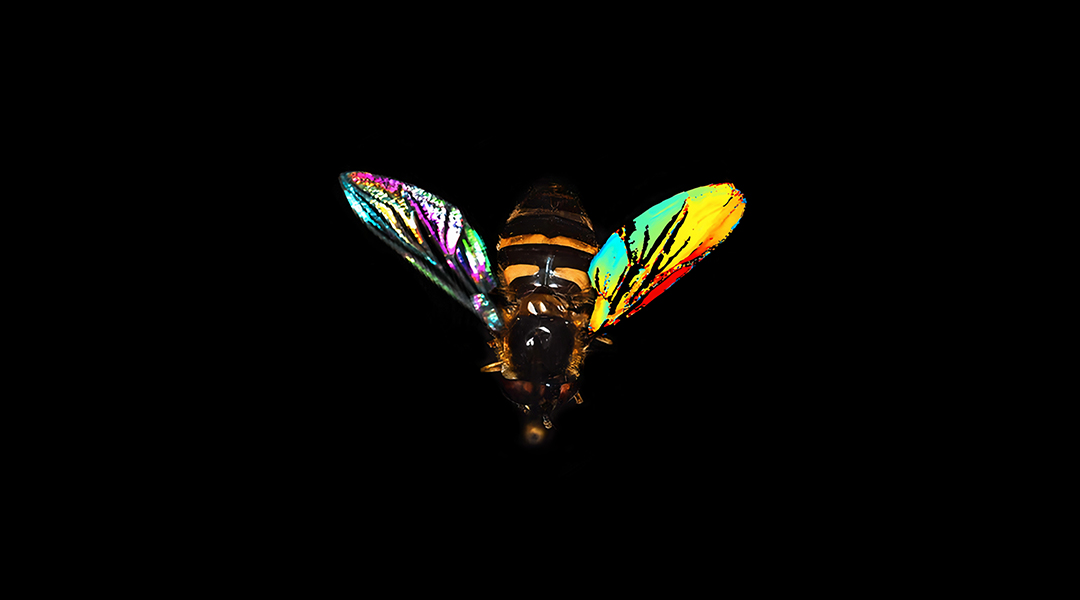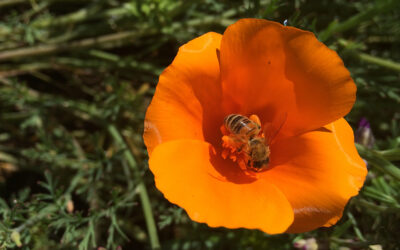Insects are the most diverse animal group on the planet, maintaining intricate relationships with their environments and fulfilling crucial ecological roles, such as decomposition of organic matter and pollination. The growing biodiversity crisis becomes evident when looking at insect numbers, and their decline has a dramatic domino effect on plants and animals alike.
While monitoring insects and analyzing their distribution over time is important for understanding factors influencing their abundance and diversity, appropriate surveillance tools are very limited.
“As a physicist entering the world of entomology, I was pretty shocked to see that we actually have very little data on insect populations,” said Benjamin Thomas, associate professor at the New Jersey Institute of Technology. As an expert on optical sensors, he has worked for the last decade on photonic tools to study insects.
A lack of means
The lack of insect surveillance tools is also a problem that Mikkel Brydegaard and his team at the Department of Physics at Lund University have been working to solve. In a recent paper published in Advanced Science, they report an easy-to-use approach that analyzes how insect wings reflect light to determine species and sex, even providing hints as to the ecological niche the insects occupy.
While conventional monitoring techniques rely on captured insects — providing a low number of observations, are labor intensive and error-prone, especially among species that closely resemble each other – approaches that use light or the spectral analysis of insect wings could change things, allowing researchers to take specialized cameras into the field to monitor free-flying populations in real time.
“This is a step toward improving the identification accuracy of these sensors, which may lead to a profound shift in our ability to monitor insect populations,” said Thomas, who was not involved in the study. “Combined with new AI tools and machine learning classifiers, this technology is very promising.”
Hover fly wings’ distinct spectral fingerprints
Similar to the unique fingerprint of humans, the delicate wings of insects can be used for their identification. When imaged with a hyperspectral camera that can capture a wide spectrum of light well beyond the abilities of our own eyes, the wings’ architecture can be reconstructed based on how strongly and uniformly they reflect the light.
“We can see how each subtle shade of color, even those outside the visible spectrum, is affected by the wing’s thickness,” said Meng Li, a Ph.D. student in Brydegaard’s group and first author of the paper. “This detailed color information is what allows us to study and identify insects more accurately based on their unique wing patterns.”
To validate their idea, Meng Li analyzed 600 hover flies from 30 different species provided by the Lund University Biological Museum. Hover flies — the number two pollinating insect after wild bees — comprise a large family of insects with almost 6000 species that differ greatly in morphology, larval diet, habitat, and behavior. One of their specialties is mimicking other insects, such as wasps or bees, and they are often seen “hovering” above their favorite flowers.
When asked if their findings are directly translatable to free-flying insects (as would be present in the field), Li explained that the wing thickness of insects does not change in the course of their lifetime and “even dried specimens in museums, which are devoid of moisture, will exhibit interference patterns [similar to those] of living insects of the same species”.
To demonstrate that their cameras could accurately discriminate between different hover fly species, the research team curated a dataset for each species with parameters defining the architecture of their wings. They also estimated the species’ wing beat frequencies, which are currently often used for insect identification, based on their body mass and wing size. When combining all of these parameters, the team achieved a 91% identification accuracy; significantly higher than when using wing beat frequencies alone.
They also found that the spectral properties of hover fly wings greatly differ not only between species, but even sexes. This is also true for species where female and male flies resemble each other so closely that they are difficult to discriminate by eye, and thus the additional sex distinction is invaluable when monitoring insect populations and reproduction.
The vast size of the hover fly family, reflected in an impressive range of different behaviors among species, prompted Brydegaard and his team to also explore the correlation of these different behaviors with the spectral properties of their wings. To do so, they first compared closely related species before correlating the wings’ architectures with factors such as behavioral mimicry and habitat type. The team found, for example, that hover flies with thicker wings tend to mimic bees, are active during summer and are primarily found on meadows and in forests.
Interestingly, while closely related species generally had similar wings, behavioral characteristics correlated even stronger than genetics with variations in wing thickness. This means that the spectral properties of insect wings are not only unique identifiers of species and sex but help further characterize their ecological niche – which is especially useful when monitoring the influence of external factors such as agriculture and deforestation on insect diversity.
The future of insect monitoring
This is, of course, not the end of the story. Their proof-of-concept study now paves the way for further studies to improve on their method and ensure it is applicable to diverse habitats. The technique needs to be tested, and potentially refined, for other types of insects that have very different wing architectures.
According to Thomas, “[The analysis] still has to be combined with other information to reach high identification accuracy of the species. It means we need to create a massive database on the optical properties of each species so it can be used to identify a diverse population of insects.”
Brydegaard and his team say they will continue to develop their insect surveillance tool and are optimistic they will further improve their sensors to increase, for example, the distance from which the insects can be captured.
Their method can be implemented using sensors already used in the field, according to Brydegaard, and importantly, on free-flying insects. This could be a promising start to curating the massive insect database and eventually monitor them in their rapidly changing habitat.
Reference: Meng Li et al, Discrimination of Hover Fly Species and Sexes by Wing Interference Signals, Advanced Science (2023). DOI: 10.1002/advs.202304657

















